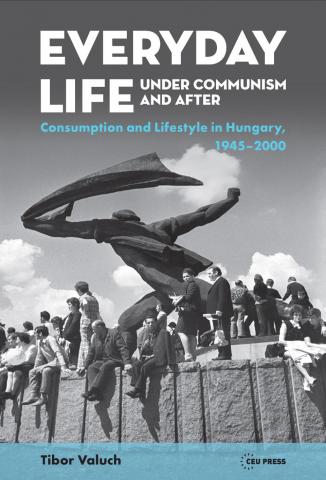
Everyday Life under Communism and After
Lifestyle and Consumption in Hungary, 1945–2000
Author: Tibor Valuch
ISBN: 978-963-386-376-3
CEU Press, January 2022
OPEN ACCESS FREELY AVAILABLE - PDF ATTACHED BELOW
By providing a survey of consumption and lifestyle in Hungary during the second half of the twentieth century, this book shows how common people lived during and after tumultuous regime changes. After an introduction covering the late 1930s, the study centers on the communist era, and goes on to describe changes in the post-communist period with its legacy of state socialism.
Tibor Valuch poses a series of questions. Who could be called rich or poor and how did they live in the various periods? How did living, furnishings, clothing, income and consumption mirror the structure of the society and its transformations? How could people accommodate their lifestyles to the political and social system? How specific to the regime was consumption after the communist takeover, and how did it change after the demise of the regime? The answers, based on micro-histories, statistical data, population censuses and surveys help to understand the complexities of daily life, not only in Hungary, but also in other communist regimes in east-central Europe, with insights on their antecedents and afterlives.
List of Contents
Introduction
Chapter One: The Study of Hungarian Everyday Life: Historiography, Methods, and Concepts
- About the sources used for this volume
- The concept of daily life, correlations between lifestyle and changes in society
Chapter Two: Two Hundred Pengős a Month, Five Hundred Forints, Two Thousand Forints…: Financial Circumstances, Prices, Wages, and Income Inequalities in Everyday Life
- National revenue, real wages, and changes in the standard of living
- Wages, prices, inequalities
- Unchanging and changing forms of poverty
- Accumulating property and wealth
Chapter Three: From Plentiful Privation to a Consumer Society: The Changes and Characteristics of Consumer Consumption
- Consumption and consumer attitudes
- The corner store, the supermarket, and the shopping center: Changes in the locations of consumer consumption
- Homes, home construction, furnishings, and durable goods
- Clothing and the consumption of apparel
- The consumption and supply of foodstuffs
Chapter Four: This Is How We Lived: Housing Conditions, Usage of Living Space, and Interior Decoration
- The general characteristics determining housing and the state of urban housing
- Village houses, village dwellings
- For those without a home: apartments for rent, beds to let, and work dormitories
- Living in dire straits—slums, shantytowns, and ghettos
- The general characteristics of changes in home interiors
- Working-class and middle-class homes
- Rural and peasant interiors
- The interior world of Soviet-type housing estates
- Summer and weekend homes
Chapter Five. “Well-dressed and Fashionable”: Changes in Clothing Styles, Habits, and Fashion
- Need and puritanism: rural and urban styles of dress in the mid-twentieth century
- Fashion and dressing habits during the state socialist period: changes in norms for everyday and formal occasions
- Up-to-date fashion and the re-differentiation of apparel at the end of the century
Chapter Six: “We Ate, We Drank, We Filled Our Stomachs”: Nutrition, Eating, and Dietary Habits
- The general characteristics of eating habits
- From starvation to “goulash communism”
- The years of “feeling full”
- Abundance and shortages after the fall of the Iron Curtain
